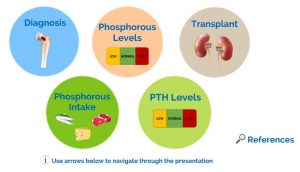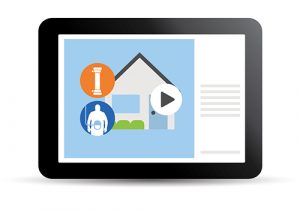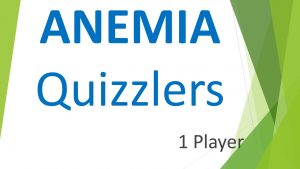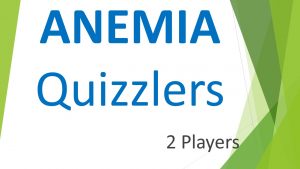Test CEU Report 001
Lorem Ipsum is simply dummy text of the printing and typesetting industry. Lorem Ipsum has been the industry's standard dummy text ever since the 1500s, when an unknown printer took a galley of type and scrambled it to make a type specimen book. It has survived not only five centuries, but also the leap into electronic typesetting, remaining essentially unchanged. It was popularised in the 1960s with the release of Letraset sheets containing Lorem Ipsum passages, and more recently with desktop publishing software like Aldus PageMaker including versions of Lorem Ipsum.
Test CEU Report 11
Lorem Ipsum is simply dummy text of the printing and typesetting industry. Lorem Ipsum has been the industry's standard dummy text ever since the 1500s, when an unknown printer took a galley of type and scrambled it to make a type specimen book. It has survived not only five centuries, but also the leap into electronic typesetting, remaining essentially unchanged. It was popularised in the 1960s with the release of Letraset sheets containing Lorem Ipsum passages, and more recently with desktop publishing software like Aldus PageMaker including versions of Lorem Ipsum.
Test 3424433
Lorem Ipsum is simply dummy text of the printing and typesetting industry. Lorem Ipsum has been the industry's standard dummy text ever since the 1500s, when an unknown printer took a galley of type and scrambled it to make a type specimen book. It has survived not only five centuries, but also the leap into electronic typesetting, remaining essentially unchanged. It was popularised in the 1960s with the release of Letraset sheets containing Lorem Ipsum passages, and more recently with desktop publishing software like Aldus PageMaker including versions of Lorem Ipsum.
CME Test CE Course
Lorem Ipsum is simply dummy text of the printing and typesetting industry. Lorem Ipsum has been the industry's standard dummy text ever since the 1500s, when an unknown printer took a galley of type and scrambled it to make a type specimen book. It has survived not only five centuries, but also the leap into electronic typesetting, remaining essentially unchanged. It was popularised in the 1960s with the release of Letraset sheets containing Lorem Ipsum passages, and more recently with desktop publishing software like Aldus PageMaker including versions of Lorem Ipsum.

Bilal Test Course staging
Lorem Ipsum is simply dummy text of the printing and typesetting industry. Lorem Ipsum has been the industry's standard dummy text ever since the 1500s, when an unknown printer took a galley of type and scrambled it to make a type specimen book. It has survived not only five centuries, but also the leap into electronic typesetting, remaining essentially unchanged. It was popularised in the 1960s with the release of Letraset sheets containing Lorem Ipsum passages, and more recently with desktop publishing software like Aldus PageMaker including versions of Lorem Ipsum.

CME Course 12
Lorem Ipsum is simply dummy text of the printing and typesetting industry. Lorem Ipsum has been the industry's standard dummy text ever since the 1500s, when an unknown printer took a galley of type and scrambled it to make a type specimen book. It has survived not only five centuries, but also the leap into electronic typesetting, remaining essentially unchanged. It was popularised in the 1960s with the release of Letraset sheets containing Lorem Ipsum passages, and more recently with desktop publishing software like Aldus PageMaker including versions of Lorem Ipsum.
Bilal Test course 123
Lorem Ipsum is simply dummy text of the printing and typesetting industry. Lorem Ipsum has been the industry's standard dummy text ever since the 1500s, when an unknown printer took a galley of type and scrambled it to make a type specimen book. It has survived not only five centuries, but also the leap into electronic typesetting, remaining essentially unchanged. It was popularised in the 1960s with the release of Letraset sheets containing Lorem Ipsum passages, and more recently with desktop publishing software like Aldus PageMaker including versions of Lorem Ipsum.
Bilal Khalid test Course 123123
Lorem Ipsum is simply dummy text of the printing and typesetting industry. Lorem Ipsum has been the industry's standard dummy text ever since the 1500s, when an unknown printer took a galley of type and scrambled it to make a type specimen book. It has survived not only five centuries, but also the leap into electronic typesetting, remaining essentially unchanged. It was popularised in the 1960s with the release of Letraset sheets containing Lorem Ipsum passages, and more recently with desktop publishing software like Aldus PageMaker including versions of Lorem Ipsum.
Identifying and Overcoming Barriers to Transplantation
New Course!
This roundtable webinar elearning course will feature a discussion of how to identify and overcome barriers in access to transplantation. In this program, Dr. Elisa Gordon and Dr. Vineeta Kumar will highlight insights from the Northwestern Hispanic Kidney Transplant Program and the UAB Living Donor Navigator Program.
If you have purchased CME credit(s) for this course, please click HERE to view the Learner Notification.
CKD-MBD Pathophysiology Clinical Cases Series Case 1: Case of Andrew
This course will provide a clinical case of a dialysis patient, challenge the learner with interactive questions to gauge understanding of the pathophysiology of CKD-MBD and guide the learner through the decision-making process to evaluate the patient.

A Practical Approach to Sodium Management in Dialysis Patients
This course will review sodium balance and toxicity in dialysis patients, discuss the role of sodium (NA) according to the new understanding of physiology, explain sodium-water imbalances in dialysis patients, describe dietary approach and sodium management in Hemodialysis (HD) and peritoneal dialysis (PD) patients.
Diabetic Kidney Disease and Use of Sodium Glucose Transporter 2 (SGLT2) Inhibitors
In this course, we will describe the role of the kidneys and sodium glucose transporters (SGLTs) in glucose homeostasis. We will review diagnosis, prevalence, and current treatment options for diabetes and diabetic kidney disease (DKD) and explain the mechanism of action of SGLT2 inhibitors. We will also highlight the importance of early prescribing of SGLT2 inhibitors in CKD and DKD.
Significance of Serum Albumin as a Clinical Indicator in CKD and ESRD
This course provides a comprehensive overview on the physiology and functional importance of serum albumin, discusses the pathophysiology and methods of evaluation of hypoalbuminemia in CKD and ESRD. It reviews albumin loss associated with different dialysis modalities and the effect of hypoalbuminemia on clinical outcomes.
Managing Suboptimal Responsiveness to Anemia Treatment for Patients with CKD
This course will provide an overview of key principles associated with the management of anemia in CKD, including factors that may contribute to suboptimal response to anemia treatment. It will also address evidenced-based approaches for patients who do not respond adequately to anemia treatment through series of clinical vignettes.
Anemia Management in Kidney Disease
This course discusses the clinical manifestations, diagnostic criteria, etiologies and guideline recommendations on the management of anemia in Chronic Kidney Disease (CKD). It provides an overview on iron deficiency anemia, Erythropoietin Stimulating Agents (ESAs) recommendations and the use of IV vs. oral iron agents. #Spanish
Understanding Hyperphosphatemia and Mineral Bone Disorder
This course discusses the pathophysiology of Mineral Bone Disorder in chronic kidney disease (CKD) and reviews the roles of the major players in mineral bone homeostasis. The course also provides an introduction to the management and treatment approaches for this disorder. #Spanish
KDIGO CKD-MBD 2017 Updates is available now! Click Here to start presentation.
Learn about the 2017 Updates of the KDOQI Mineral and Bone Disorder Guidelines and stay up-to-date with topics related to MBD diagnosis, recommended phosphorus intake, goal phosphorus levels, goal PTH levels, and MBD in transplant patients. The key differences between the 2017 and 2009 guideline recommendations are highlighted in the short presentation. Full guideline document can be accessed at the end of the presentation or by clicking on the references icon.

Fluids, Electrolytes, Acids and Bases
This course provides a comprehensive overview on major components of body fluid, mechanisms of homeostasis and their impact on fluid movement. It will review acid/base chemistry and roles of electrolytes in normal body functions. It will also cover how these components are regulated by the kidneys, the possible causes, symptoms and treatment strategies of imbalances in patients with kidney disease.
Fluid Management in Kidney Disease
This course will describe fluid compartments of the body and the role of the kidneys in fluid management, the consequences of fluid overload in kidney disease, guideline recommendations on fluid management approaches and the principles and applications of tools for measuring and evaluating fluid overload in patients with kidney disease. #Spanish

Peritonitis in Peritoneal Dialysis
This course provides up-to-date information on the classification, diagnosis and treatment of peritonitis in peritoneal dialysis (PD) patients according to the updated 2016 ISPD guideline recommendations. It also covers patient and treatment-related factors that can impact peritonitis and discusses prevention strategies. #Spanish
If you have purchased CME credit(s) for this course, please click HERE to view the Learner Notification.




